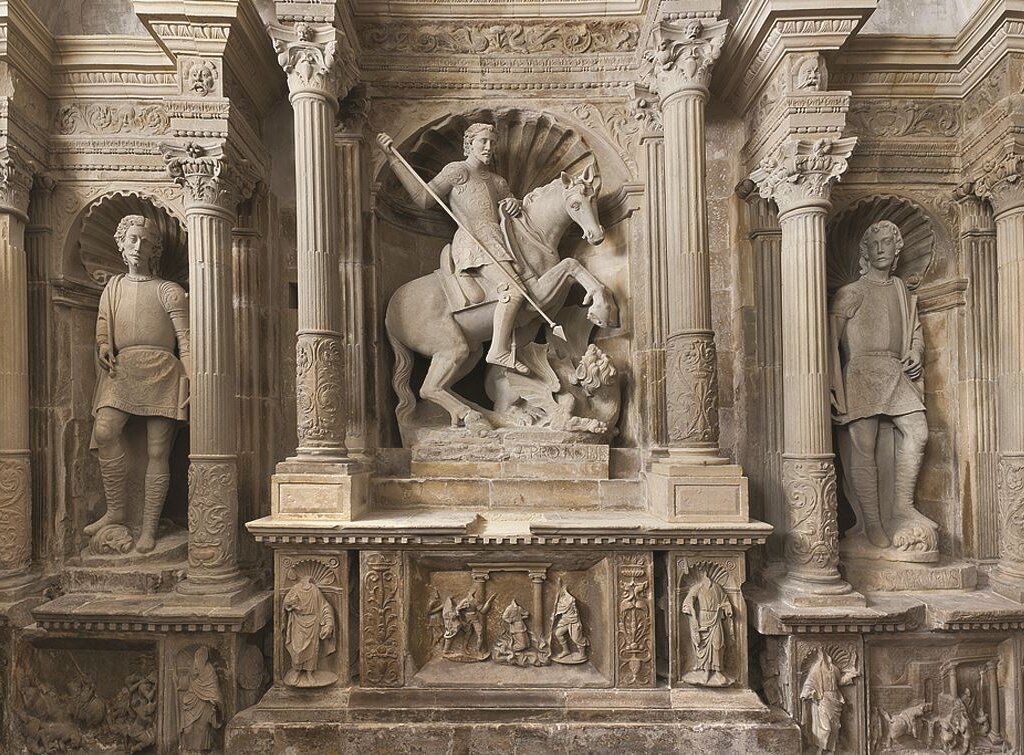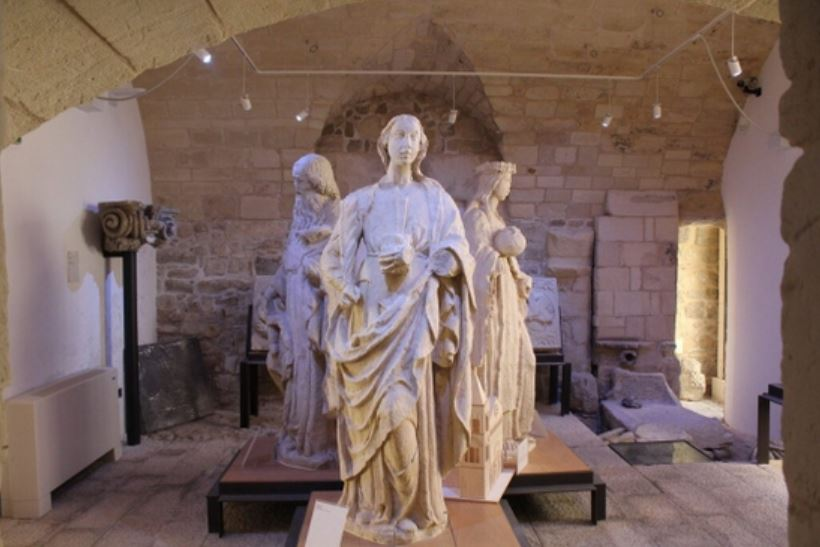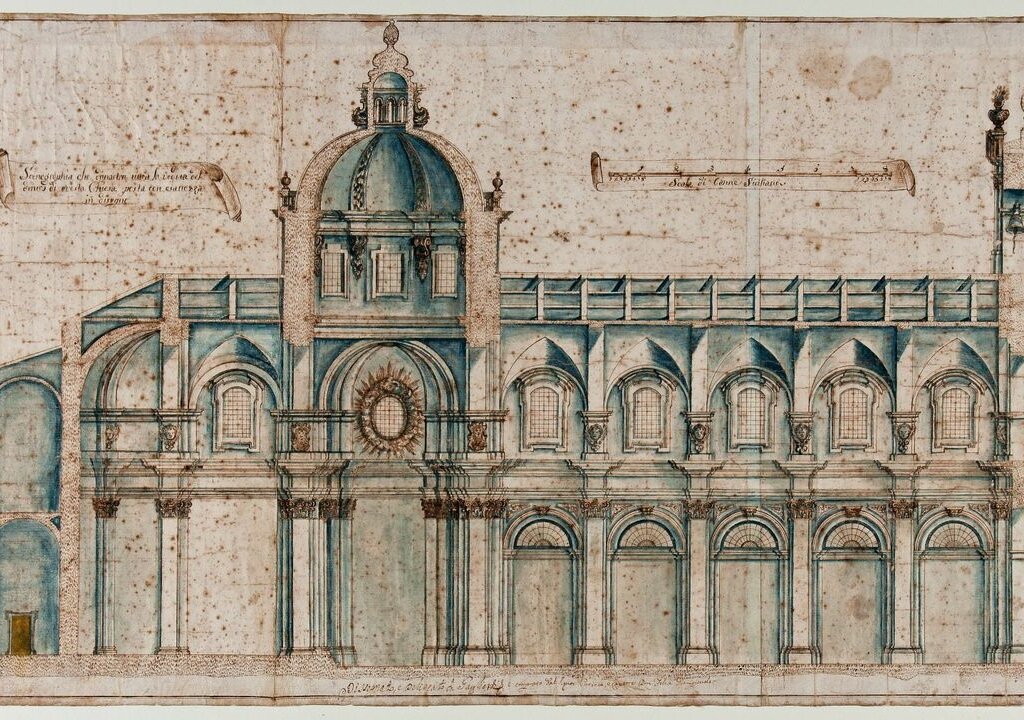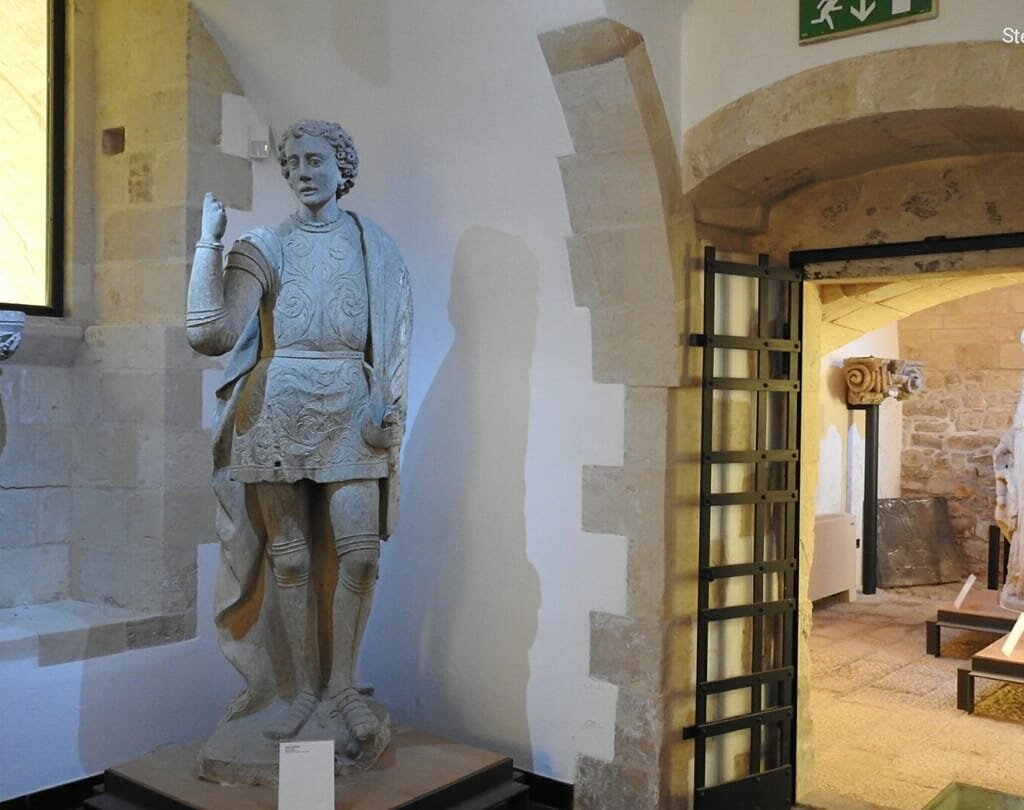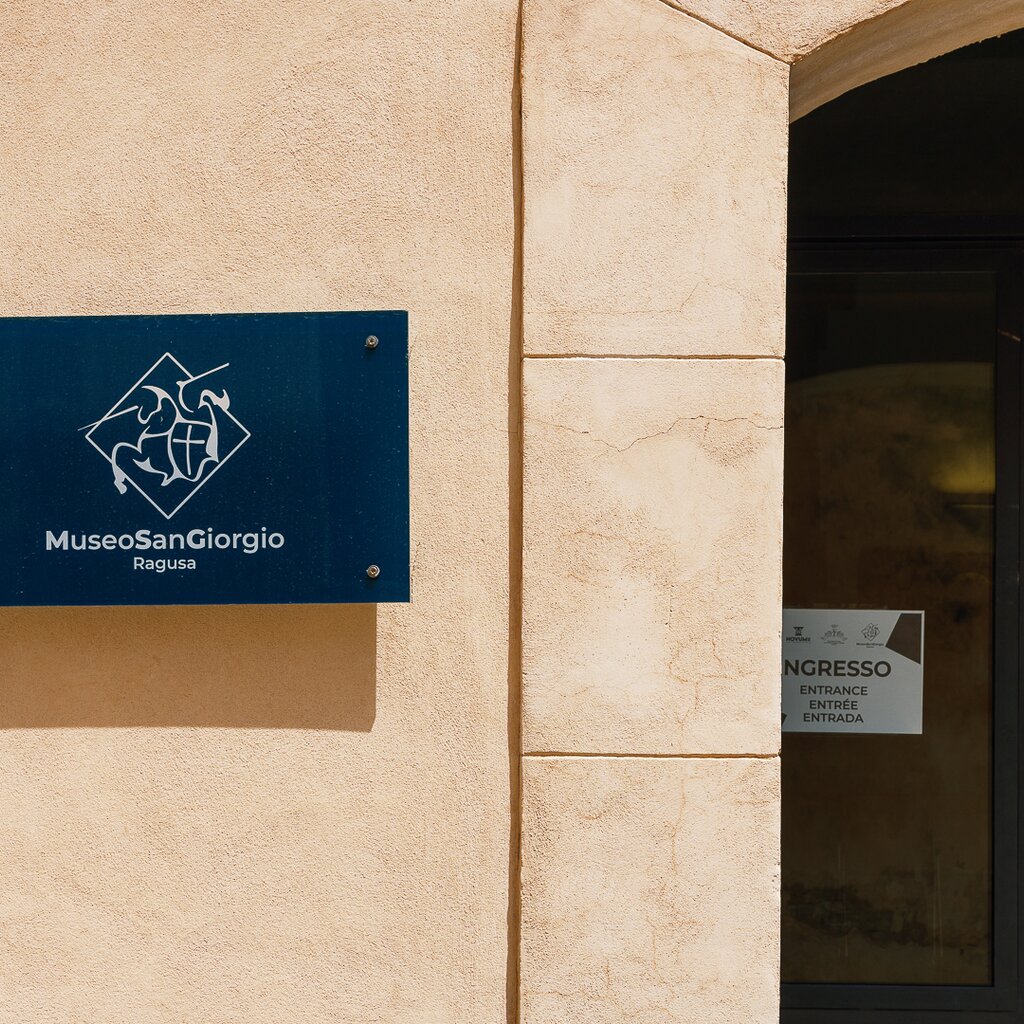The Museum
The Museum of the Cathedral of Saint George offers visitors the opportunity to learn about more than one thousand years of religious and political history in Ragusa.
On the ground floor, in addition to architect Rosario Gagliardi’s original plans for the construction of the new cathedral, visitors can also see huge stone fragments from the former Gothic church dedicated to Saint George that was destroyed by the great earthquake of 1693, located near the Iblei Gardens, where the lavish entrance portal still stands.
Upstairs there is a huge and valuable collection from the “Treasure of Saint George”, which includes the priceless Byzantine engolpion, a pectoral cross medallion, displayed in a cabinet where it takes centre stage. There is also the remarkable golden monstrance encrusted with diamonds, emeralds and rubies belonging to Giuseppe Vella of Palermo, donated to the cathedral by Canon Giuseppe Sortino in the 18th century.
When the Insigne collegiate was created in 1727, the final room was named in its honour by abbot Antonino Giampiccolo, who became the first priest and cantor of the collegiate.
Gagini’s Altarpiece
No visit to the museum would be complete without seeing a 16th century masterpiece which, miraculously, is still with us today. This is a huge stone altarpiece, commissioned for the first church of Saint George and crafted by Antonino Gagini.
